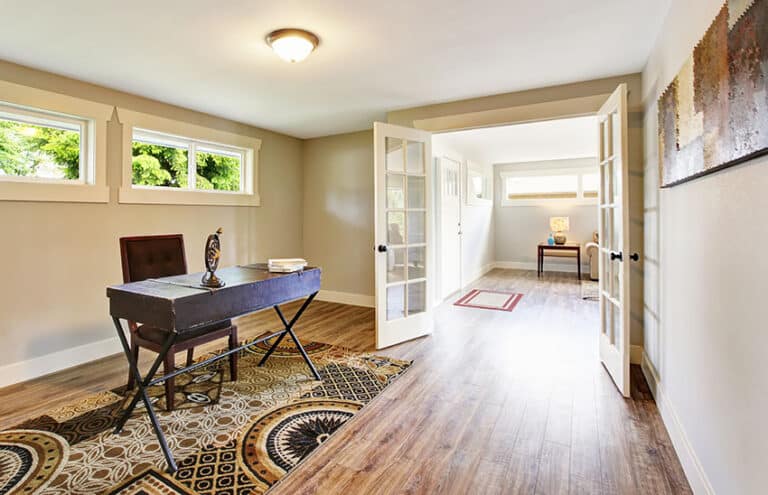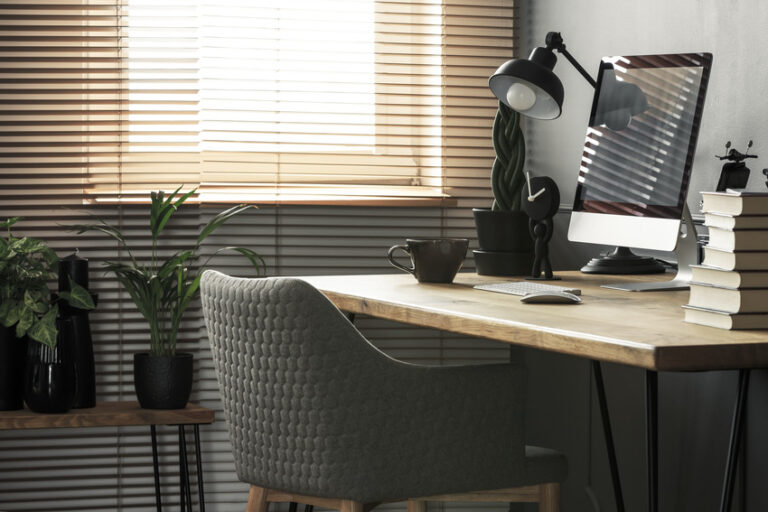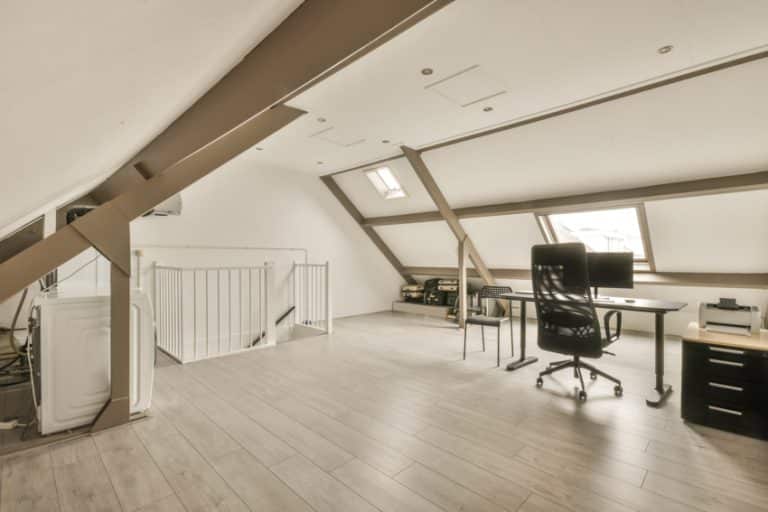Types of Filing Cabinets (Styles, Uses & Materials)
See the different types of filing cabinets including their materials, styles, sizes, types of cabinet locks, and tips on how to choose the best filing cabinet for your office.
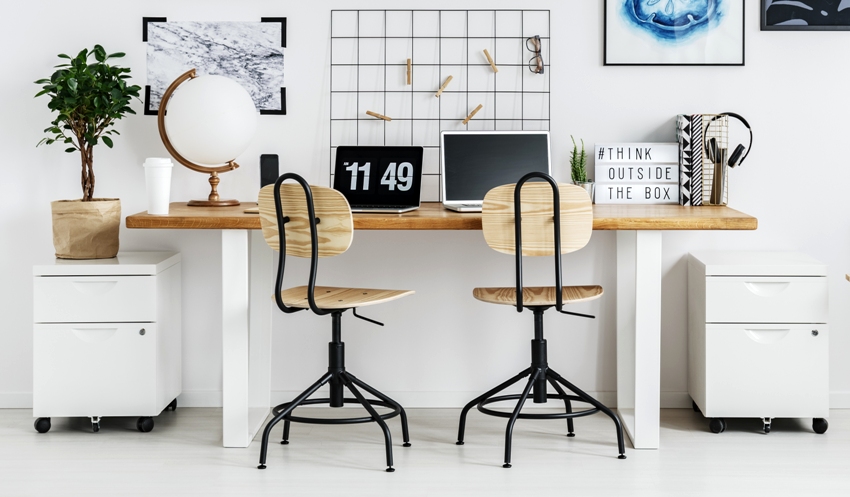 When you’re developing an office space either professionally or at home, storage is an important consideration. For many, this means turning to filing cabinets to hold all their important documents in an organized fashion. However, you have more options than you might think when it comes to filing cabinets as well.
When you’re developing an office space either professionally or at home, storage is an important consideration. For many, this means turning to filing cabinets to hold all their important documents in an organized fashion. However, you have more options than you might think when it comes to filing cabinets as well.
Lateral File Cabinets
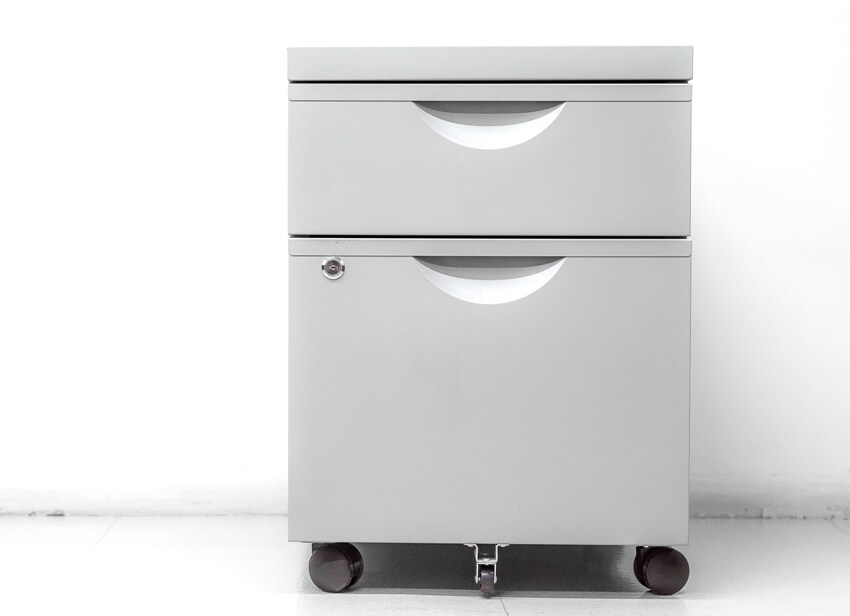
This way, you can place them in a narrow space and not have to worry about the drawers not being able to open. More specifically, lateral file cabinets are usually about 32 to 36 inches in width.
This makes these file cabinets rather versatile. You can use them to hold most standard-sized legal and letter pages. Since the drawers are so spacious, you usually have some freedom with the position of the documents once they’re in the cabinet.
Depending on how much space you need, you can choose from a range of drawer numbers as well. On average, lateral drawers usually have two to seven storage drawers. Given the wide proportions, cabinets with two drawers are usually low enough to fit under a table or desk to tuck it out of the way.
Vertical File Cabinets
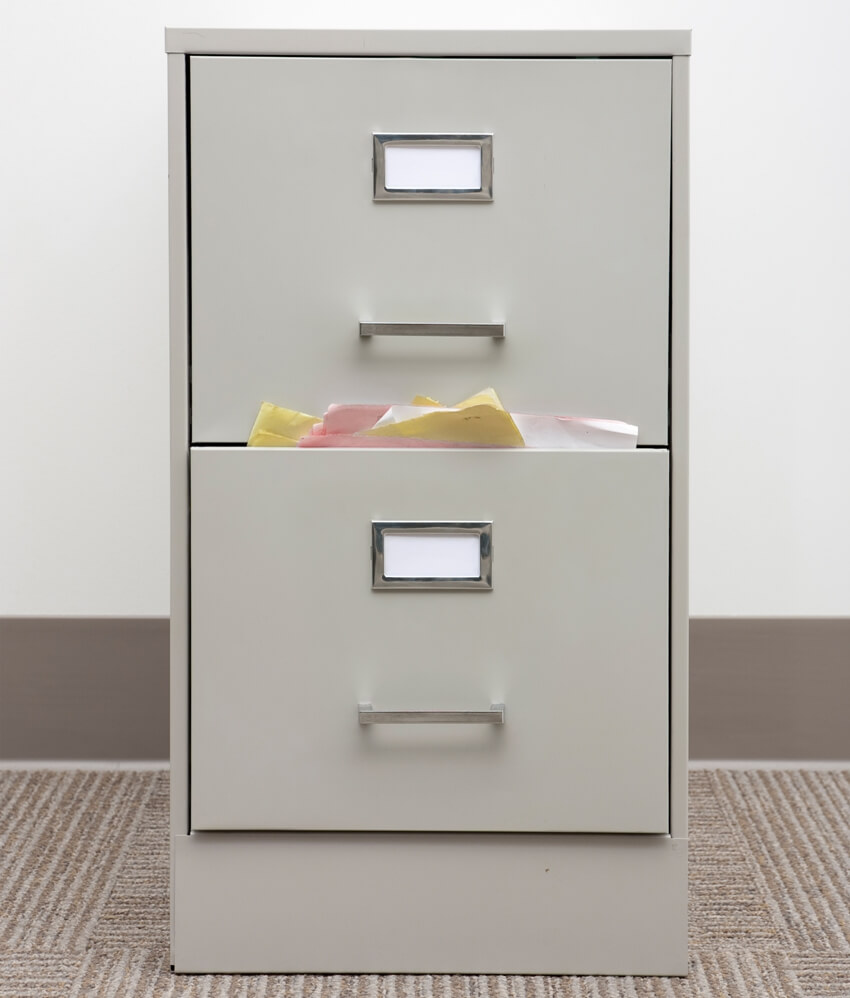
Since these file cabinets do rely on the depth of the drawer, you will need to consider that the drawers will open further than a lateral file cabinet. As such, they may not fit into as tight of spaces so that they have clearance to open.
On the other hand, since these file cabinets are so narrow in width, they’re easy to fit at the end of a desk or in a bit of extra space in your office. All in all, vertical files are among the most popular in both professional offices and home office designs.
Mobile File Cabinets
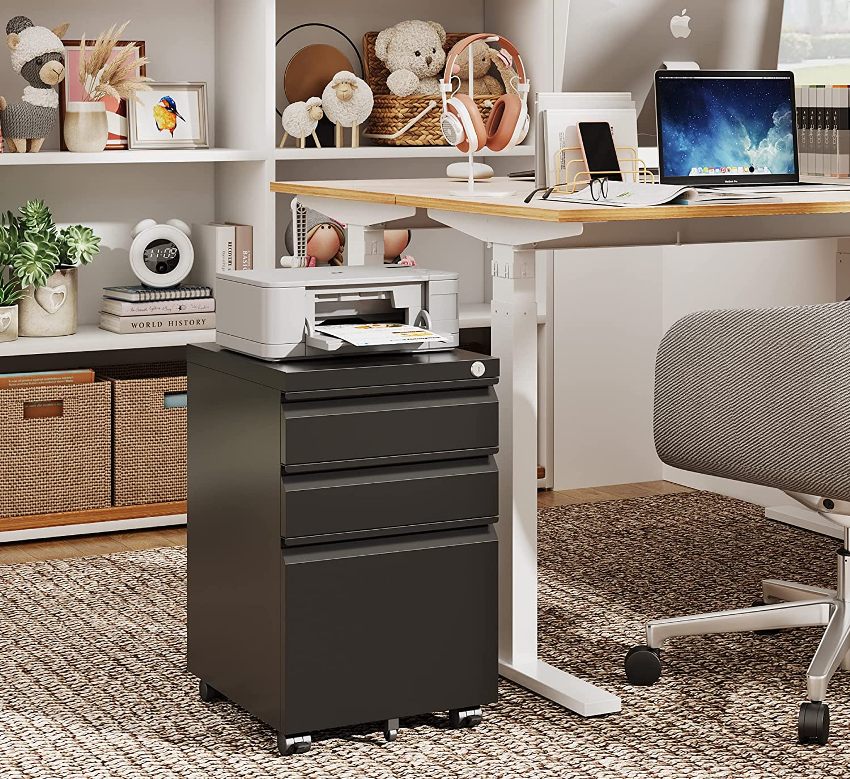
As their name implies, mobile file cabinets are meant to be easy to move when you need to. That’s why these models are equipped with wheels on the bottom rather than stagnant feet. In some cases, you might notice a central, fifth wheel on your mobile file cabinet. This helps to add extra stability.
Of course, you probably don’t want your cabinet to roll away if you bump it while you work. In most mobile file cabinet models, you can lock the wheels when you want to keep the cabinet in place.
As for appearance, mobile file cabinets can vary a bit. The vast majority lean on the style of a vertical filing cabinet since the narrow design is easier for one person to roll around compared to a lateral file cabinet.
Similarly, most mobile filing cabinets are rather compact so you can easily roll them under a desk or table when you need them out of the way but there are some larger models available. In some models you’ll find filing cabinet drawers with a larger storage compartment for holding other types of office equipment.
Flat Filing Cabinets

Flat filing cabinets look noticeably different from a lot of other types of filing cabinets. This is because they’re usually rather short with long, thin drawers. This has to do with how you file things in these cabinets. Rather than setting them upright in a stack, the items in a flat filing cabinet are laid out with a single page in each drawer.
This is because part of the purpose of a flat filing cabinet is to prevent these items from bending or curling. Plus, the closed drawer offers protection from plenty of other elements as well.
As such, these types of filing cabinets are often used to hold items like blueprints, pieces of art, and other very large documents. This way, you can store and protect them without having to roll, fold, or otherwise modify them in a way that could cause damage or even curling edges when they would be a nuisance.
Letter Size File Cabinets
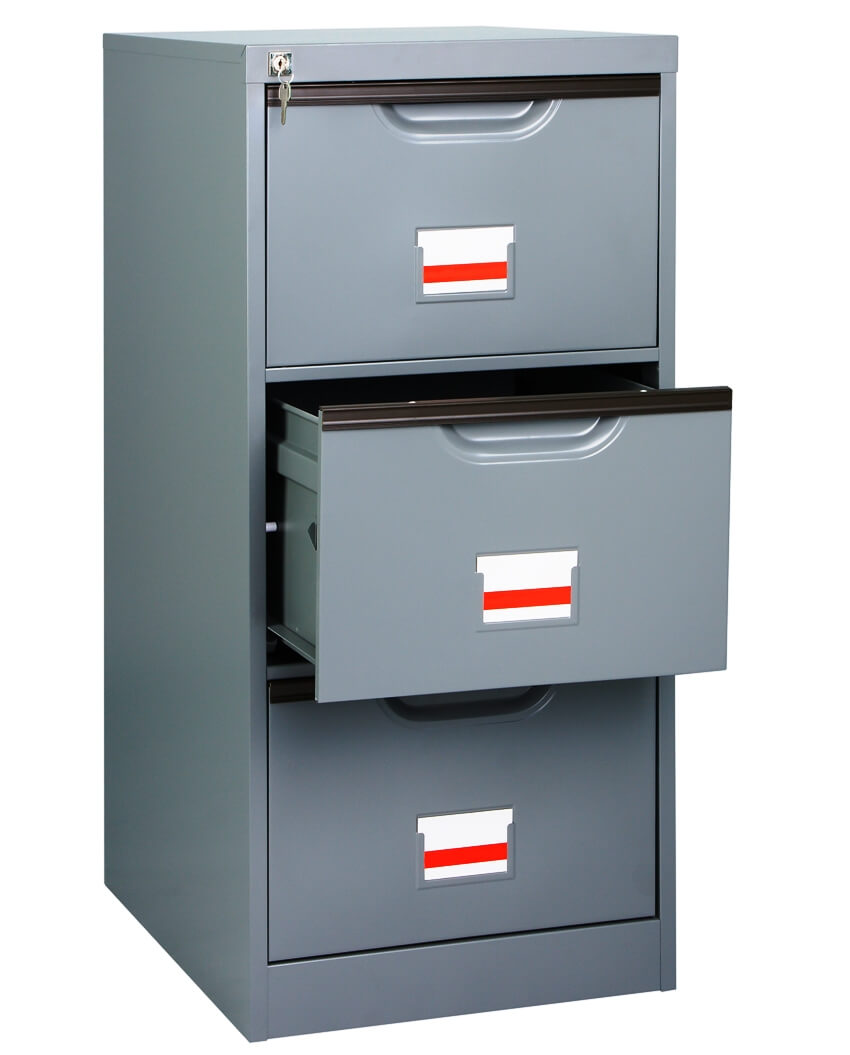
Letter paper is a common size for documents. These documents measure 8-½ inches by 11 inches and letter size file cabinets are typically 15 inches wide. This is also the size of standard printer paper, so if you have any pages you’ve printed off and want to protect, you’re likely dealing with a letter paper size document.
Since this size document is so common, most file cabinets are made to accommodate these types of documents. This gives you a lot of versatility when choosing the type of filing cabinet that works best for your space.
Legal Size File Cabinets
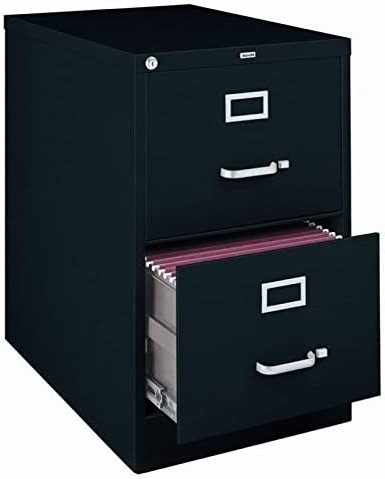
Legal size file cabinets are meant to hold documents that are legal in size. A legal-size document measures 8.5 inches by 14 inches. To hold these documents, a legal size file cabinet is typically about 18 ¼ inches wide.
While the legal size isn’t one used for quite as many options as letter paper, it’s still popular enough that you should have plenty of options as you’re looking around for a legal size file cabinet.
Pedestal File Cabinets

Pedestal file cabinets are built compactly. This way, you can slide them out of the way under a desk to stay out of the way. Due to their compact size, you’ll have to sacrifice some storage room but it’s a great way to add a surprising amount of storage to a small space.
Since these cabinets are meant to fit into tight spots, they aren’t usually more than a couple of drawers high. In a similar vein, they usually aren’t egregiously wide either as to leave enough room for anything else, such as someone sitting at a desk chair next to it.
Rolling File Cabinets
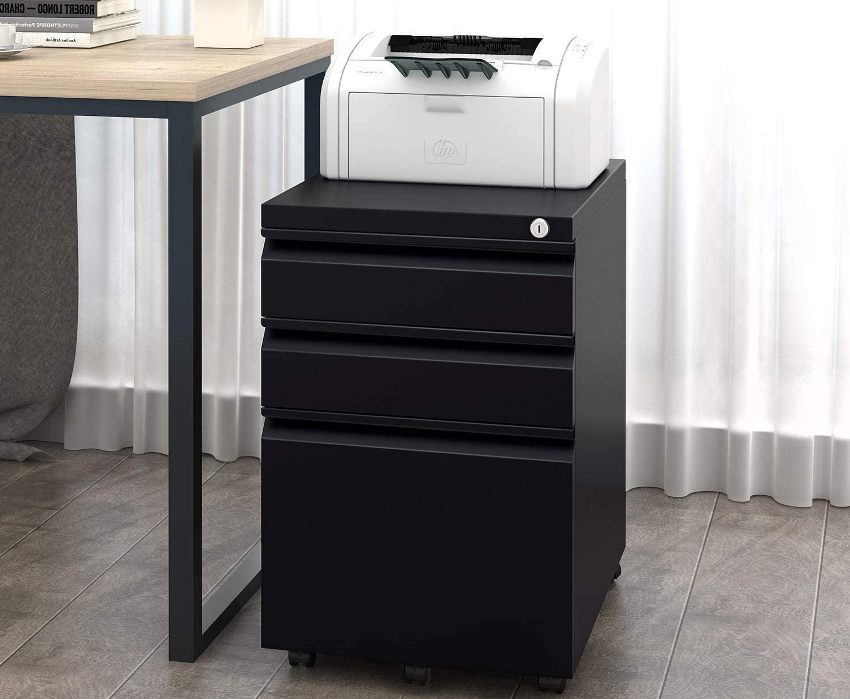
The concept of rolling file cabinets is very close to that of mobile filing cabinets. Both types of filing cabinets are on wheels with the idea that it makes them easier to roll around. This way, if you need to move them from place to place, you don’t have to worry about getting a dolly or scooting a filing cabinet along the floor.
The main difference between mobile file cabinets and rolling file cabinets and their size. The term “rolling file cabinets” usually refers to a smaller concept than a mobile filing cabinet. Instead of being about the size of a full file cabinet, rolling file cabinets are about the same size as pedestal file cabinets.
Much like pedestal file cabinets, the goal here is to offer something compact that will suit a small office space well.
Open Shelf Filing Cabinets
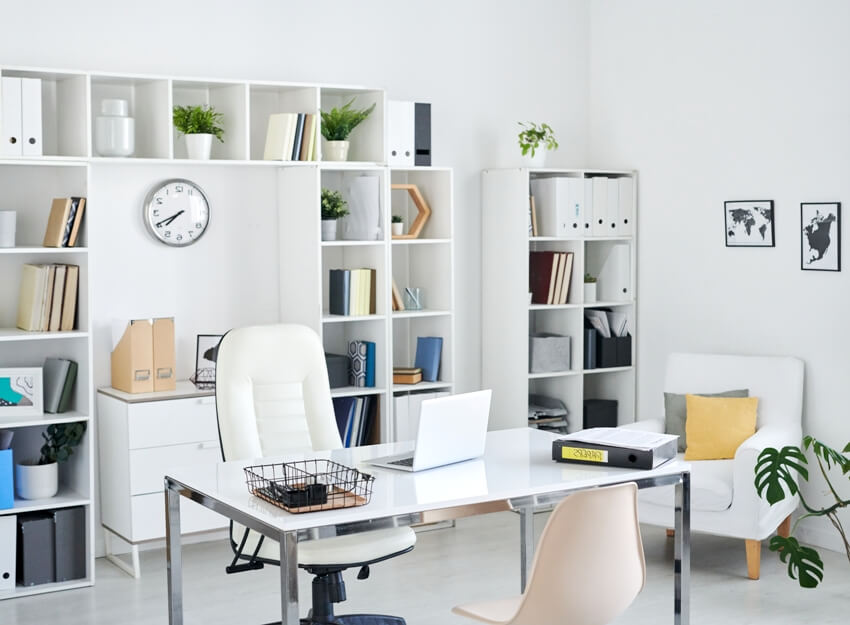
However, these filing cabinets are often meant to fit your documents, some even including dividers to help keep everything in place. One benefit of this type of cabinet is that if you find you have leftover space, it’s easy to store other items like books or even small decorations. Since they offer so much storage space, they’re a popular choice in busy offices.
There are a few drawbacks to open shelf filing cabinets, though. Since they’re open rather than protected by a door or drawer, they don’t offer quite as much security or protection. This means they aren’t always the best choice if you’re trying to find something fireproof or just want to protect the contents of your files from prying eyes.
Side Tab File Cabinets
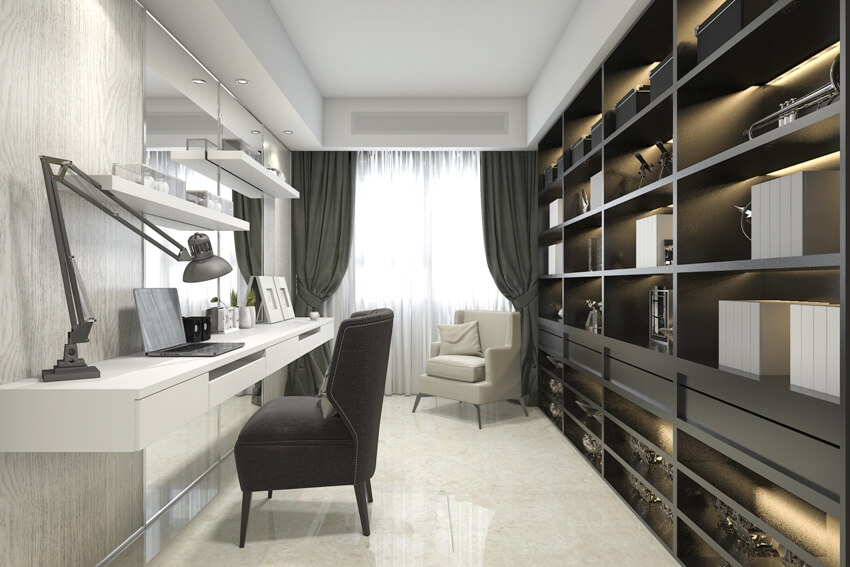
These cabinets hold your files vertically, usually sorted into file folders with documents inside. To keep these sorted and in place, adjustable dividers are available.
Since you read the tab of the file folder to find what you’re looking for, the cabinet takes on the “side tab” portion of its name directly. Plus, this style offers space for a variety of document sizes filed in your collection.
The shelf-style design is great if you want to be able to grab something quickly without dealing with doors or drawers. If you don’t like the appearance of the open shelves, side tab file cabinets are sometimes available with doors, usually either tambour or swinging doors.
Fireproof File Storage Cabinets
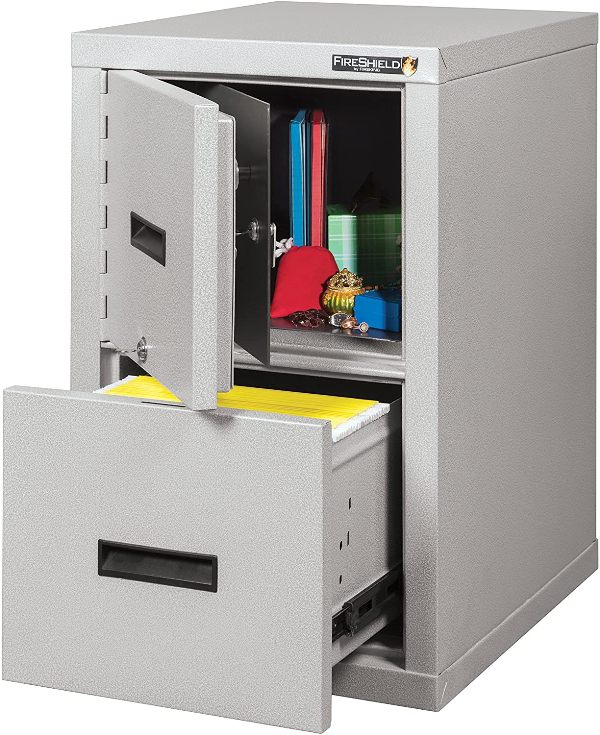
When you purchase a file cabinet, part of the benefit to that is your documents are more secure than if they were to just sit out on your desk. You can lock them away and they’re safe from things like a spilled drink or another big mess.
Yet, not all filing cabinets will protect your documents if something disastrous like a house fire were to happen. If you want this extra layer of protection, you’ll need to look for fireproof file storage cabinets specifically. These have an extra layer of insulation to help prevent file damage from a fire.
For one, this means that your documents are safe in the case of a fire. In addition, they’re also helpful for water to a degree. Since they’re often used in offices, they’re made to protect your files if a sprinkler system went off in reaction to the fire as well.
Storage Islands
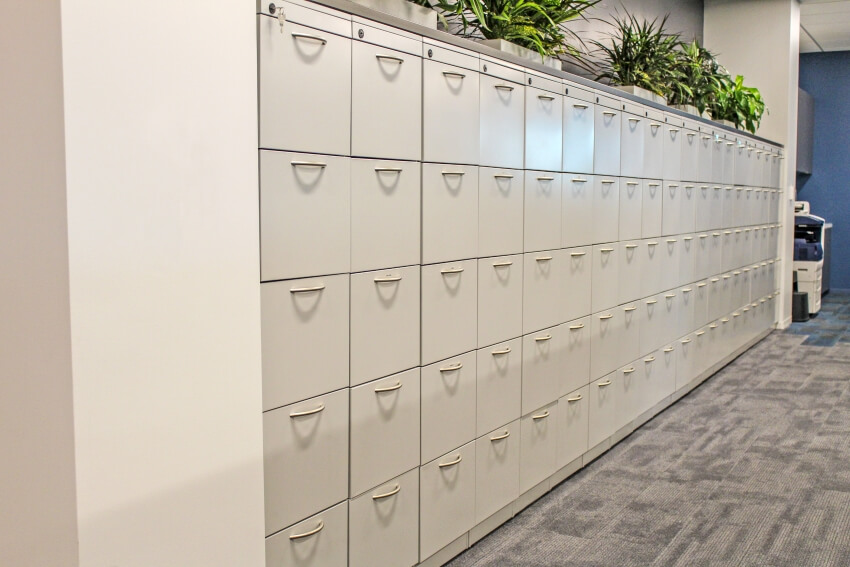
Unlike most filing cabinets, these don’t usually sit on the floor. Rather, they’re usually installed into or set on a desk or countertop space. This way, you can simply reach up and grab what you need close to wherever you’re working.
Unlike most filing cabinets, you aren’t limited to just drawers either. Storage islands often feature other types of storage including shelves and dividers similar to a smaller version of a side tab file cabinets.
File Cabinet Materials

These often lock and some even feature fireproof measures. However, the trade-off is that their appearance is often rather utilitarian rather than decorative.
For something a little more aesthetically appealing, you can opt for a wooden filing cabinet. These often come at a higher cost but are made with a further decorative appeal.
While they come at a higher cost, you can save on costs but get a similar look by opting for laminate or veneer. The only major downside is that these materials aren’t fireproof as often.
Another option you can look into is plastic. Plastic has quite a few benefits including its inexpensive cost and lightweight design. However, it’s much less secure than metal or even wood and it won’t offer as much protection or durability.
File Cabinet Sizes
File cabinets come in a variety of sizes. As such, it’s important to know exactly how to find the right size to suit your needs and your space. See our guide to the standard file cabinet sizes here.
For the size of the filing cabinet as a whole, consider how much space you’re willing to dedicate to your filing cabinet. If you want something compact, a rolling cabinet or pedestal file cabinet with one or two drawers works best. If you have more space, larger options like open shelf cabinets can work as well.
Additionally, you’ll want to consider the size of the documents you want to store. Most file cabinets are made to accommodate letter paper but you’ll want to consider if you’ll need to store any specialty sizes.
On a similar note, consider any special treatment your documents need too. If you have large pages that need to stay flat, as an example, you’ll want to consider an option to accommodate that like a flat file cabinet.
Types Of Filing Cabinet Locks
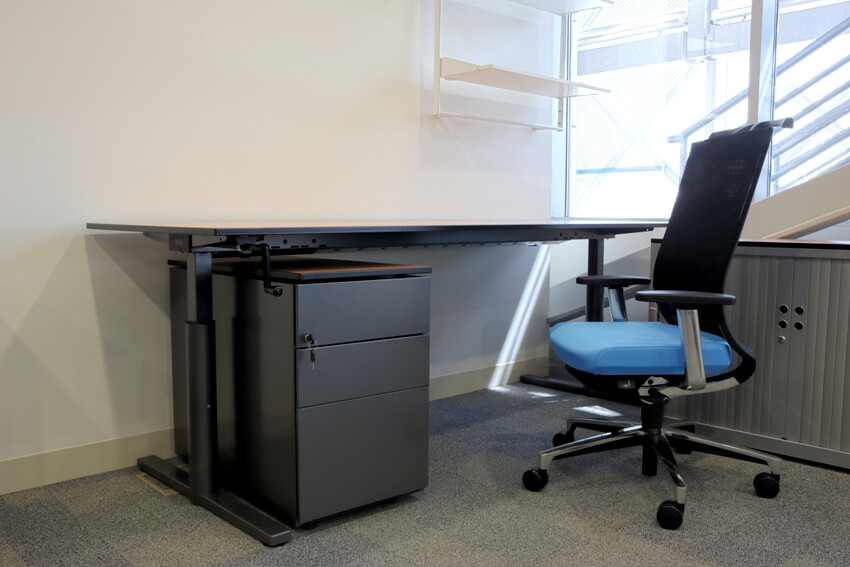
These are the locks that fit with a circular key and opened like a lock on a door. These types of locks are rather secure, offering your documents plenty of protection.
A cam-style lock is like a tubular cylinder lock in that it requires a key that you turn to unlock it. This style of lock hooks your file cabinet closed from the inside when it’s locked, making it rather inconspicuous from the outside. This is a popular choice in file cabinets and other types of secure cabinetry.
Another option is to opt for a padlock. Padlocks can come in a variety of appearances and usually either work with a key or combination. These typically work by allowing you to hook them on the opening, lock it into place, and unlock and remove the lock once you need to access the files inside.
How To Choose A Filing Cabinet

In a similar fashion, you’ll want to think about the size. This includes not only how much space you need to store all your documents but the size of documents the filing cabinet holds too.
Next, you’ll want to consider any extra features that the filing system offers. For example, can you lock the doors of the cabinet if you’re looking for extra security? If you want a little extra protection in case of a fire, does the filing cabinet you’re considering a fireproof file cabinet? These considerations will make sure you cover all of your needs, not just get some extra storage.
On a less practical note, it’s not out of the question to forget about aesthetics either. It’s important that if you’re decorating your office space, you consider what works with your needs while still making your space inviting and productive.
For a more related article, visit our guide to the types of desks.

